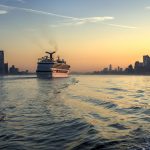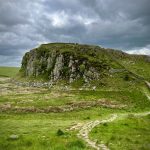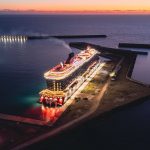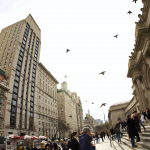The United States is renowned for its plethora of stunning national parks, making it a challenging task to select one as a destination. With some of the top national parks globally located in the US, extensive research is necessary if you are planning a trip solely to visit one of them.
The most visited national parks might be great destinations, but they can become extremely crowded certain parts of the year. Other parks, however beautiful, might be inaccessible on a budget. While others may still be closed at certain times of the year.
You also need to bear in mind what you enjoy doing and what you want to see in a national park during your visit. If you know you want to see Yosemite Valley then you already know your destination – but you need to plan for the weather and the crowds to avoid disappointment.
The Blue Ridge Mountains can be great, but can you see them during the winter? Do they have natural hot springs? How do you choose between Zion National Park and Grand Teton National Park? How do they compare to the Acadia National Park? If you’d like some of these questions answered, look no further. Join us on our epic journey through the best national parks in the USA.
Big Bend National Park, Texas

This iconic and beautiful national park is one of the least visited national parks in the USA despite its breathtaking scenery and excellent hiking trails. In addition to these fantastic hiking trails, you can also kayak in the park or enjoy the many hot springs.
While we are on the topic of hiking trails, here are some of the best ones on offer at Big Bend National Park: Emory Peak, South Rim Trail, Santa Elena Canyon Trail, Boquillas Canyon Trail (at its best early in the morning), Grapevine Trail, Window View Trail, and The Lost Mine Trail (ideal for sunsets).
Summers at Big Bend National Park can be sweltering, so the best time to go is in winter. In fact, summer temperatures can be so extreme they have closed the visitor center on occasion due to the heat.
Yellowstone National Park, Wyoming

Yellowstone National Park is not only one of the most well-known parks in the USA, but it is actually the oldest National Park in the world. When it comes to national parks, Yellowstone is unique with its majestic and surreal displays of geysers, spring pools, and wildlife.
As far as national parks in the USA go, Yellowstone national park has some of the most easily recognized natural attractions in the country. It is home to Old Faithful, Lamar Valley, Hayden Valley, Elk Park, Grand Prismatic Spring, Norris Geyser Basin, and the Mammoth Hot Springs.
Unlike with some smaller national parks (where only campgrounds are available) you are able to spend the night in any of the various accommodation options available within Yellowstone National Park.
Yellowstone is one of the most popular national parks in the USA and therefore sees a great influx of visitors during the summer months. It can be so bad that there are often massive traffic jams within the park itself and this can be an overall unwelcome experience for someone who just wants to see the sights and relax a bit. Therefore, it might be better to visit the park during spring or fall when there are fewer people and the days are not quite as stiflingly hot. You should, however, try to avoid visiting during the winter as many of the roads inside the park are closed to private vehicles.
Glacier National Park, Montana

The Glacier National Park is an expansive park that takes at least three days to explore properly. However, if you only do one thing on your trip to Glacier National Park it should be the Going-to-the-Sun Road which runs through the center of the park. Along this road, you will encounter several hiking trails and essential scenic stops like the Hidden Lake Overlook, St. Mary Falls, and Lake McDonald Lodge.
While we love Going-to-the-Sun Road we have to admit that the best way to experience this park is via hiking.
It is best to visit the park from July to September as the park is actually closed from October to May due to the heavy snows that are common during these times. Due to the short open season, you can expect large crowds, so plan trips accordingly.
Everglades National Park, Florida

The Everglades National Park is a UNESCO world heritage site with a fascinating local ecosystem. While there are hiking trails in the park, it is one of the few national parks in the USA that also offers airboating. When visiting the Everglades, make sure to stop by the Ten Thousand Islands Wildlife Refuge where you can even view some endangered species in the labyrinth of islands, water, and mangrove forest.
It is best to visit the park in the dryer months between October and May. This is outside hurricane and mosquito season which will greatly improve your overall experience of the park. Regardless, the park is open during the summer months but it is best to book activities early in the morning to avoid the worst of the heat and summer storms.
Sequoia National Park, California

The Sequoia National Park is one of the only places you can go to see the majestic Sequoia tree which is known as the widest tree in the world. In addition to these otherworldly trees you can also enjoy several waterfalls, meadows, alpine lakes, towering peaks and forest trails. If hiking is your thing, look no further. Sequoia National Park boasts with hiking trails suitable to any level of difficulty, from rigorous multi-day difficult terrain trips to family-friendly beginner day hikes.
This park is also home to the famous High Sierra Trail which spans 72 miles, starting at Cresent Meadows and ending at Mt. Whitney. If you would prefer day hikes, try the Moro Rock trail which gives you full views of the Great Western Divide. If a casual stroll through the forest is more your speed you can visit the Giant Forest where you can see the General Sherman Tree. The list of day hikes for various difficulty levels just keeps going on and on and really has something for everyone – plan your trip ahead of time so that you can research these trails and find the ideal set for you and your family.
For those free spirit souls who love their water sports, swimming, paddle boarding, and kayaking are all popular pursuits on Hume Lake.
Both winter and summer are popular times of the year to visit the park. Each season offers its own unique national park experience. The winter brings some snow and most winter sports associated with a winter wonderland, whereas summers bring the perfect opportunity to enjoy the water and the lush green landscape.
Joshua Tree National Park, California

If you are looking for a truly unique natural experience, look no further than Joshua Tree National Park. The landscape and natural flora are truly out of this world. Although the park spans two deserts (Mojave and Colorado) the navigation system is so well constructed that it is possible to traverse the park in a day. Should you wish to stay longer there are several campgrounds to choose from.
Detailed maps of the hiking trails are available from the visitor’s center. The park’s hiking trails vary in difficulty and length and there are a few family-friendly options to choose from, making this the ideal family destination for those who are looking to enjoy the alien landscape of these two beautiful deserts.
To see the Jumbo Rocks you can take the Skull Rock Nature Trail, for birdwatching the Barker Dam Nature Trail is best, and if it’s chipmunks you are after, try the Hidden Valley Nature Trail. There are also several lookout points like the Keys View from which you can see Coachella Valley, and the Cholla Cactus Garden is the ideal place to take a closer, but decidedly careful, look at the local flora, including the teddy bear cactus.
Winter and summer both bring extreme temperatures to Joshua Tree National Park, so it is best to visit during spring and fall. However, regardless of when you choose to visit the park it is strongly advised to prepare for extreme fluctuations in temperature – bring a lot of water, sun protection, and layers of clothing.
Yosemite National Park, California

When it comes to famous national parks in the USA Yosemite National Park is certainly high up on the list. It remains a breathtakingly beautiful and vast park with some truly unique experiences and landscapes. It is also one of the only places in the country outside of Sequoia National Park where you can see the Sequoia trees.
Some of the most popular hiking trails in Yosemite National Park include the Mirror Lake Loop, Bridalveil Fall, Yosemite Falls, Nevada Fall, Vernal Fall (although you should be prepared to get wet), and the Mist Trail. You can also enjoy unique rock formations like El Capitan and the Half Dome. Whether you are climbing yourself, or are simply there to watch, El Capitan is a majestic beast to view up close.
If you are there in the winter take the shuttle up to Badger Pass Ski Area where you can snowshoe, snowboard, or ski to your heart’s content.
The park can be quite packed during the summer, so if you want to avoid the crowds you might want to visit in spring (May to June) so that you also stand a better chance of missing the snow. Although the fall has similar perks there is an increased chance of wildfires, and if you don’t mind the snow, winter is also an option.
Grand Teton National Park, Wyoming

This versatile national park is home to a 42-mile-long loop road that encompasses the majority of the park. Along the way, you can stop at Signal Mountain for a view of Jackson Lake. You can see some moose at Schwabacher Landing, the iconic Snake River Overlook and Oxbow Bend.
There are several hiking trails to choose from within the national park, including the Cascade Canyon trail with breathtaking views. Furthermore, in the summertime guests can enjoy Kayaking, boating, and swimming in some of the lakes in the area, whereas wintertime brings opportunities for skiing and snowboarding.
Summers in this national park can be crowded and the winter brings heavy snowfall, so it might be best to plan around these obstacles.
Gateway Arch National Park, Missouri

The Gateway Arch National Park is one of the world-famous stops on Route 66. Because this national park is one of the youngest parks in the USA, having only been founded in 2018, it sports some unique attractions, including a small museum and an amphitheater.
The Arch, which the park is named after, was completed in 1967 after seven years of construction. Its purpose is to commemorate the western expansion of the US. There is a tram that can take visitors to the top of the Arch which provides some fantastic views of the surrounding national park grounds.
Although the summer is a great time to visit the park, it can be quite busy that time of year. However, if summer is the time for you it could be advantageous to visit the park early in the morning before lines have formed.
Cuyahoga Valley National Park, Ohio

Cuyahoga has been a registered national park since 2000, but it remains one of the less-known gems among US national parks. The park is situated next to the Cuyahoga river where some of the most beautiful hiking trails in the area can be found. The most notable of these is the 20-mile-long Ohio & Erie Canal Towpath Trail.
Remember to check out both the Ritchie Ledges and the Brandywine Waterfall on your visit to Cuyahoga Valley National Park.
This park is a great place to visit during the winter months when the Polar Express is running. It provides a very festive atmosphere that is great for family entertainment and a fantastic way to see large parts of the park.
White Sands National Park, New Mexico

The White Sands National Park is one of the most beautiful and unique national parks in the USA. The majority of the park consists of the world’s largest gypsum dune field. Although it has been there for many years, it was officially declared a national park in 2019.
If you enjoy adventure or are looking for something to do with the kids, try sand sledding. But if you are looking for something more romantic, the sunsets at White Sands National Park are to die for.
The park is open year-round, but summer months can be scorching and uncomfortable.
Shenandoah National Park, Virginia

The Shenandoah National Park covers a significant section of the Blue Ridge mountains in Virginia. There is no denying that it is one of the most beautiful national parks in the USA. You can see the sights in this glorious park either via Skyline Drive or the almost 500 miles of hiking trails traversing the park.
The most popular of the hikes in Shenandoah national park is the Old Rag Mountain hike which covers a circuit of 9.4 miles. Be warned that this hike is not for novices and has some physically challenging parts to it. Several of the smaller hikes are great for everyone, even kids, and many of them lead to waterfalls.
The most popular time to visit the park is in fall, but spring and winter are also great times to see the sights.
Acadia National Park, Maine

Acadia National Park is a fantastic destination for an adventurer. Photographers love the park, as do bikers and hikers who have access to the many carriage roads across the park. The Ocean Path is family-friendly and has some amazing views from Otter Cliff to Sand Beach. The Jordan Pond Loop provides views both of the North and South Bubble Mountains and hikers can stop in at the Jordan Pond House for a quick snack.
For the more advanced adventurer, the Beech Cliff Trail, The Jordan Cliffs Trail, The Precipice Trail, and the Beehive Trail have iron-rung-equipped trails. In addition, regardless of ability, the Cadillac Mountain is not to be missed.
The park is open year-round but it is best to visit between spring and fall months when the weather is not too extreme. The winter months see many attractions closed and the weather can be extremely cold.
Crater Lake National Park, Oregon

Crater Lake National Park is the only national park in Oregon. While it is not nearly as big as some of the other national parks on this list, it remains one of the most beautiful natural wonders that the US has to offer.
As the name suggests the national park consists of a lake that formed inside the crater left behind when Mt Mazama erupted. This lake is the deepest and second cleanest freshwater lake in the state and is sacred to the indigenous Makalak people.
While swimming in the lake is welcome, you will not be able to boat or kayak on the lake. You can also enjoy the Cleetwood Cove Hiking Trail and some of the breathtaking lookout points the park has to offer – Plaikni Falls, the Pinnacles Trail, and Watchman Overlook. This is also one of the few national parks in the USA that has wheelchair-friendly trails like the Sun Notch Trail.
During winter and most of spring a large portion of the park is closed due to snowfall, so it is best to visit this national park during the summer or fall months.
Mount Rainier National Park, Washington

Mount Rainier National Park reigns as one of the most diverse national parks in the USA. Among others you may find an active volcano and snow-capped peaks as well as vast forested expanses in this truly beautiful national park.
This is not a park that can be traversed in a day, and we estimate that several visits throughout the year are required to truly appreciate the diversity of what this national park has to offer.
Mount Rainier provides its visitors with several hiking opportunities, some of the most incredible lakes in the state, and mountaineering! From late July to early August the Paradise area in Mount Rainier boasts some of the most spectacular and colorful wildflowers that grow so close to the Pacific Ocean.
The best time to visit the park is towards the end of summer – although you can still expect to see some snow blankets throughout any time of the year. This gives you an opportunity to see the wildflowers, waterfalls, and find all the roads open. Other parts of the year can be extremely cold and some hiking trails may be inaccessible due to snowfall.
Pinnacles National Park, California

Pinnacles National Park is one of the least visited national parks in the USA regardless of the extraordinary wilderness that can be found there. Undeniably the most popular reason for visiting this park is to go hiking. Pinnacles does not have a road running through it, so exploration must be done on foot.
When you take the High Peaks Trail you can find endangered roosting Californian Condors and experience the beauty of Pinnacles National Park through a bird’s eye view. You will also be able to explore one of two talus caves close to the entrances to the park via family-friendly hiking trails.
Summertime in the park can be extremely hot and it is advised to visit the park during milder months from late fall to early spring.
Olympic National Park, Washington

Olympic National Park, much like the name suggests, is one of the largest national parks in the USA. This means that the park spans several different ecosystems from snow-capped peaks, and rugged coastlines, to old-growth rainforests.
If you are a true connoisseur of nature feel free to take in the beaches, Marymere Falls, Lake Crescent, Sol-Duc Hotsprings, and the Hoh Valley Rain Forest. The vast list of hiking trails that can be found in the Olympic National Park has something for everyone. Elk Mountain, Klahhane Ridge, Hurricane Ridge, and The Hall of Mosses are only some examples.
In order to get the full appreciation of the park it is best to camp for a night or two – but remember that amenities at these campsites are very basic. For longer hikes, there are wilderness camping permits available as well. Unlike in most other parks in the USA, there are also camping spots on the beach – although you might need to hike in with all of your camping gear.
Rainfall in the area is plentiful throughout the year which means that not even the summertime is guaranteed to be dry. Spring is the best time for wildlife and waterfalls. May to October is best for hiking, although most trails, baring the higher elevation trails, are open throughout the year.
Zion National Park, Utah

Zion National Park is one of Utah’s Mighty Five making it one of the most visited destinations in the state. Due to its location surrounding the Virgin River and Zion Canyon, the park displays both lush green views and the well-known orange-craggy landscape that the southwest is known for.
The hikes in Zion are all quite unique from each other, even the three best-known trails: Subway, the Narrows, and Angel’s Landing. None of these options are for beginners. The Narrows will lead hikers through a river, Angel’s Landing is quite high up and not suited to people who are uncomfortable with heights, and both Angel’s Landing and the Subway are so challenging that they require a permit. You can also try the Emerald Pools trail, Observation Point, or the Canyon Overlook Trail.
Winter months include some snow and icy conditions whereas the summer can usher in some extreme heat. Aside from these considerations you will need to consider the crowd as well. Zion is an extremely crowded park compared to other national parks in the USA. It is so crowded that most of the Zion Scenic Drive are closed to private vehicles outside of the winter months – you can only take it via the shuttle system.
Rocky Mountain National Park, Colorado

Do you love alpine lakes and high-alpine adventure? Rocky Mountain National Park might be the place for you. Pine forests litter the landscape all the way to the Continental Divide, and along the way, there are stunning mountain views to appreciate.
The hiking trails in this park are world-renowned and range from mountain climbing to family-friendly day hikes. Sky Pond, Gem Lake, Dream Lake, and Long’s Peak are all alpine dream hikes. Another notably popular Rocky Mountain National Park activity is driving the scenic Trail Ridge Road. This is a great way to catch the views and see some wildlife.
Summertime is a great time to see wildlife (although it is best to keep your distance), so bring your camera! There should be plenty of opportunities to see black bears, rams, coyotes, moose, elk, pika, marmots, and chipmunks.
Backpacking and rock climbing are also common activities in the park. If you are looking to avoid crowds, try visiting the west side of the park or other auxiliary areas that see fewer visitors.
The best, but also busiest, time of the year to visit this park is from July to September. Parking lots tend to fill up by 6 am, so expect a long wait, or take a shuttle. While spring and winter is also a great time to visit you can expect the Trail Ridge Road to be closed along with many other trails because of the avalanche risk.
Great Smoky Mountains National Park, North Carolina/Tennessee

The Great Smoky Mountains National Park is the most visited national park in the US. The park is within an hour’s drive of a number of major cities and offers some fantastic wildlife viewing along with free admission. Salamanders, otters, elk, and black bears are common sights within the Great Smoky Mountains National Park. There are many scenic drives, waterfalls, and walking trails to enjoy. Overall the park boasts more than 150 hiking trails at various levels of difficulty.
The Great Smoky Mountains are situated in a moderate climate area which means that temperatures will be mild all year-round. During the winter there might be some closures in certain parts of the park. But fall brings beautiful fall colors and boisterous elk, summer sees energetic waterfalls and lush flora, while spring provides bountiful wildflowers.
Death Valley National Park, Nevada

Death Valley got its name from the failed attempts of pioneers to cross the Sierra Nevada mountains due to the extremely dry and hot landscape. If you are looking for something other than a lush forest to visit then this is one of the best national parks in the USA to explore an entirely different kind of landscape that is not dissimilar from the Grand Canyon.
Death Valley is the largest National Park in the US although most of its attractions can be found at its center. They can generally be experienced fully within two days. Some great sunrise destinations include Zabriskie Point or the Mesquite Dunes. The best spot to enjoy the sunset is Badwater Basin – one of the lowest points in the US.
Artist Palette drive creates some crazy geology in more ways than one. If you are looking for an educational experience you can visit the Rhyolite Ghost Town where you can learn about the history of local mining.
Although Death Valley remains one of the best national parks in the USA to visit, it is not advised to ever visit in the summertime. Extreme heat is common in summer and visiting the park during these heat waves is simply not safe.
Denali National Park, Alaska

Denali National Park is home to the likewise named tallest mountain in North America. The surrounding Denali park is extremely large. But regardless of its size, it remains one of the most accessible national parks in Alaska, including extensive bus access.
There is also a wide variety of campgrounds to choose from and the famous car lottery to participate in.
At lower levels in the park you can see vast forest landscapes that give way to tundras at higher elevations which eventually give way to glaciers right at the top. Winter activities in the park take the cake including dog sledding, snowmobiling, and cross-country skiing.
North Cascades National Park, Washington

The North Cascades National Park is affectionately known as the American Alps due to its mountainous beauty. Of the three national parks in Washington, this one is the least visited mostly because it is difficult to access, but no less beautiful than its two siblings.
If you love multi-day backpacking hikes, this is the place to be – if you have a certain level of experience as most of them are not suited to beginners and amenities are few and far between. The park is, however, extremely beautiful and lacks the massive crowds that some other parks struggle with.
Glacier Bay National Park, Alaska

Glacier Bay is extremely difficult to get to. In fact, you can only access it by floatplane or boat. This also means that it is not nearly as crowded as some other destinations on this list. Why bother then? Well, the wildlife and scenery are fantastic, including floating icebergs, some otters, sea lions, and seals.
It is best to visit during the summer when there are some Alaska Cruise Ship trips that go into this national park – if the ice is not too thick.
Wrangell St. Elias National Park, Alaska

This is one of the more accessible national parks in Alaska and is easily one of the most beautiful national parks in the country. The landscapes are so scenic that they sometimes do not even seem real. Also, this park actually allows you to drive to some of the sceneries in the park.
Wrangell St. Elias National Park is the largest national park in the US including 9 of the 16 tallest peaks in the US. This park is so large that it is larger than some states in the US. That being said, it is a 5 hour drive from Anchorage to get there.
Canyonlands National Park, Utah

Canyonlands National Park sometimes finds itself in the shadows of the Arches National Park, but it is also one of Utah’s Mighty Five. While it is possible to experience the park in one day, we would advise taking it a little slower to get the most out of the experience. This national park is so large that it is divided into four districts.
The most popular of these is the Island in the Sky district. You can see the Green River Overlook, Grand View Point Overlook, and the Mesa Arch in this part of the park. The Green River that runs through this park connects with the Colorado River at the Confluence Overlook, and the Colorado River then flows fort to the Grand Canyon.
To avoid extreme temperatures plan your visits for April/May or September/October.
Arches National Park, Utah

If you are looking for an interactive national park experience in the US then Arches is for you. Red rock is abundant as are sandy trails, climbing rocks, alleys and tunnels made of sandstone, and an overall high textured backdrop. While the park does get quite crowded it seems to be very well managed as most people report not feeling cramped and crowded even during peak times.
Capitol Reef National Park, Utah

As far as national parks in the USA go, Capitol Reef is not well known. This means there are no crowds and the scenery is far easier to get to. It is also extremely close to a small town where accommodation and restaurants are available. The ark sports several day hikes and is fantastic for stargazing.
Since this is a Utah park it is still best to avoid summer visits due to the extreme heat.
Indiana Dunes National Park, Indiana

This is one of the newest additions to the US national park system and is one of the few that offers year-round activities that are mostly family-friendly.
Lake Michigan provides a great day-at-the-beach spot for early worms who can get there before the spots fill up. There are also about 115 miles worth of hiking trails including the Cowels Bog Trail which is about 5 miles long and quite challenging. This trail will take you to the beach, through forests, swamps, marshes, and ponds.
Also available in the park are bird watching, camping, and horse riding. In the winter you can enjoy cross-country skiing and snowshoeing. If you are looking for some educational experiences you can visit the Paul H. Douglas Center in the park where you will have access to freebies, activities, and displays.
Summer visits are popular due to the quality of the beaches that can be found in the park, but locals often visit at any time of the year, and so can you.
Katmai National Park, Alaska

Katmai is the home to the famous footage of bears hunting salmon at Brooks Falls, and you can observe the very same from the plexiglass viewing area. In reality, however, Katmai is extremely difficult, and expensive, to reach which makes it inaccessible to many people. The park cannot be accessed via road at all and requires a private flight.
Voyageurs National Park, Minnesota

The Voyageurs National Park straddles the Canadian border and can usually only be accessed via boat. This park is a watery wonderland full of lakes and islands and forests that make up most of the park. You are able to canoe on these tranquil waters and camp on the shores. At night, certain times of the year, you may even catch a glimpse of the northern lights.
Bryce Canyon National Park, Utah

Seeing Bryce Canyon in all its glory can be an alien experience. Bryce Canyon has the largest concentration of hoodoos in the world – these are rock columns formed through stream erosion and frost weathering. The park has four viewing areas: Sunset Point, Sunrise Point, Inspiration Point, and Bryce Point. From April to October there is also a shuttle service available.
Bryce Canyon has various day hikes available that vary in difficulty and length. The Navajo Loop Trail and the Queen’s Garden Trail are both fairly popular.
April to October are the most popular times to visit when temperatures are mild. Snow can be found in January and February, but the park is generally open year-round.
Badlands National Park, South Dakota

The Badlands National Park is in the South Dakota Northern Great Plains area.
It is the quintessential picture of the American west including the bison and prairie dogs. The best time to view the park is at sunset when the entire landscape is bathed in fire.
Redwood National Park, California

Redwood National Park sports wildlife, valleys, streams, coastline, and misty Redwood Forests as part of its repertoire. In addition, there is a plethora of wildlife to be found here that are somewhat uncommon in other national parks in the USA. While the usual elk are roaming the forests you will also be able to glimpse some whales on the coastlines.
The vividly green undergrowth lends itself to the perfect backdrop for streams and waterfalls that pepper the landscape. In addition this is also home to the tallest trees in the world.
For more information on any of these national parks please contact the national park service.






